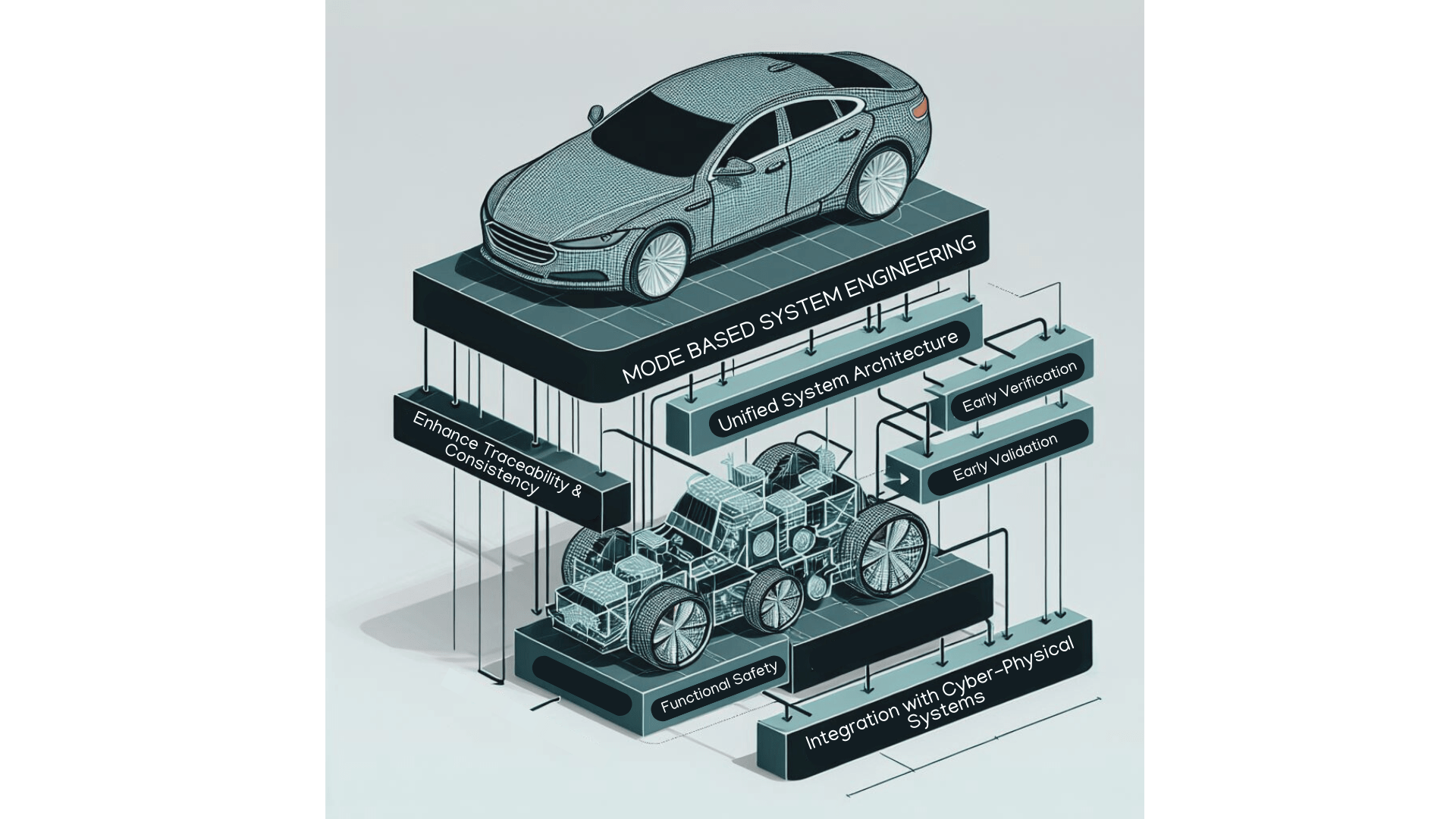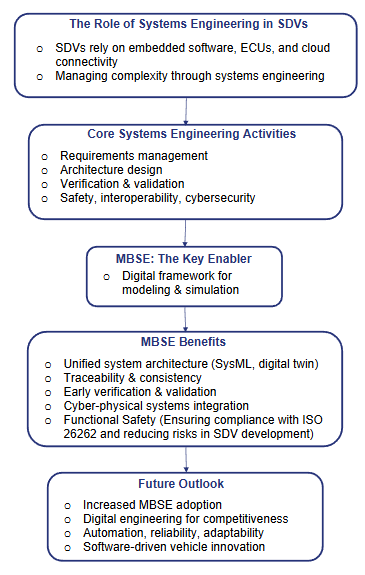Software-Defined Vehicles (SDV): Transforming Automotive Engineering with Systems Thinking and MBSE


MBSE: The Key Enabler for SDV Development
Model-Based Systems Engineering (MBSE) plays a pivotal role in SDV development by providing a digital framework for system modeling, simulation, and validation. MBSE enables engineers to:
- ● Develop a Unified System Architecture: Using SysML and digital twin technologies, MBSE helps define logical, functional, and physical architectures for SDVs.
- ● Enhance Traceability and Consistency: MBSE ensures end-to-end traceability from high-level requirements to implementation, reducing inconsistencies in system design.
- ● Facilitate Early Verification and Validation: By simulating vehicle behaviors before physical implementation, MBSE reduces development risks and costs.
- ● Streamline Integration with Cyber-Physical Systems: SDVs operate in an ecosystem of IoT, AI, and cloud services, necessitating a structured MBSE approach to optimize interactions between software and hardware components.
Future
As SDVs continue to evolve, the adoption of MBSE will become indispensable for ensuring efficient and scalable development processes. Automotive OEMs and suppliers must embrace digital engineering methodologies to stay competitive in an era where software-driven capabilities define vehicle innovation. By integrating MBSE into the SDV lifecycle, the industry can achieve higher levels of automation, reliability, and adaptability, ultimately shaping the future of mobility.
If you are interested in understanding how to adopt systems engineering and model based systems engineering practices within your organization, reach out to BlueKei Solutions team at info@Blue-Kei.com. We specialize in systems engineering consulting, project executions, process adoptions such as compliance to ISO15288, ARP 4754A, ISO 42020, digital transformations. We can also conduct capability development workshops which are experiential and tailored to your needs. With systems engineering adoption you can address the complexity, manage evolving risks and bring transformation in communication within your organization through digitalization and create the digital thread.

